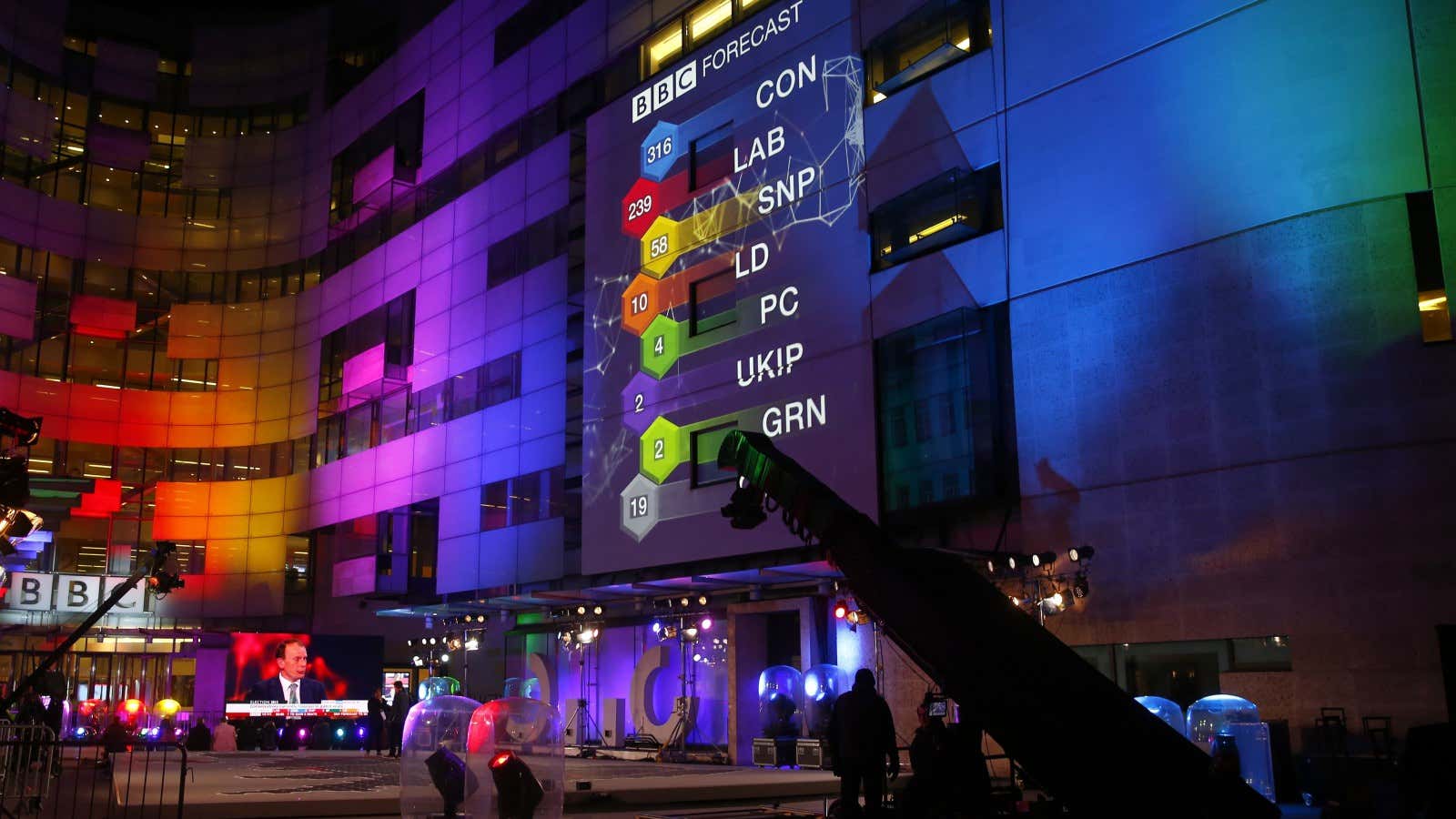Nate Silver is famous in the US for being right. He was right about the outcome of the 2008 American presidential election in 49 of the 50 states, making a name for himself as a statistician of note. In 2012, he got all 50 states right, cementing his status.
But in the UK election of 2015, he was wrong. Then again, so was everyone else.
Silver was correct in his prediction that the Conservative Party, led by incumbent prime minister David Cameron, would get the most seats. But he saw the result as being much, much closer than it was. Ahead of the election, the blog Silver runs, FiveThirtyEight, tweeted its predictions. Here’s what FiveThirtyEight was projecting the day before the election:
In other words, no party would get close to the 325 seats needed for an outright majority.
A lot of pollsters were making similar forecasts. YouGov had the two main parties polling almost neck and neck for weeks, indicating they’d win 34% of the vote each. The Liberal Democrats were predicted to do badly, and the Scottish National Party to have a sweeping victory. The result would be a messy, multifarious system more common to other European countries, many predicted—including us.
But as soon as the exit polls came in, the ground seemed to shift underfoot. The Conservatives’ predicted share of the vote had suddenly leapt to over 300 seats, while Labour’s dropped away from the target that would make them contenders to lead a government. The hung parliament, which many had begun talking about as a virtual inevitability, seemed less certain. Pundits were shocked.
By morning, when most of the results were in, the Conservatives were cruising toward an all-out victory. Labour had lost not only the (predicted) Scottish seats, but many constituencies in England. The Lib Dems’ seat share had been slashed by a massive 86%. The SNP achieved a huge victory and both the UK Independence Party and Green Party won only one seat each.
So, what went wrong? Silver held up his hands: “I think the forecasts — certainly including ours — should have provided for a greater margin of error,” he said on Twitter.
He also pointed to a post by Harry Enten on FiveThirtyEight in which polling methodology was more rigorously examined than perhaps it had previously been. Internet polls that were taken into consideration yielded less accurate results than polls conducted by telephone, which in turn were less accurate than those conducted in person.
“American media has been far more reluctant to adopt newer polling technologies and tends to stick to live telephone probability samples,” wrote Enten. “Perhaps we’re on to something.”
Silver notes that polling is getting harder. The British Polling Council is reportedly calling for an independent inquiry into the accuracy of the UK polls.
There has also been discussion in the UK today about whether voters—especially those planning to vote Conservative—felt compelled to conceal their intentions.
But the impact of the UK electoral system itself should not be overlooked. If the system has taught UK voters anything, it should have made us aware by now that the results can propel some parties to victory and lay waste to others, apportioning parliament seats in ways that don’t always reflect the apportionment of the votes cast. And that makes it all the more difficult for anyone to predict how the chips will fall.
